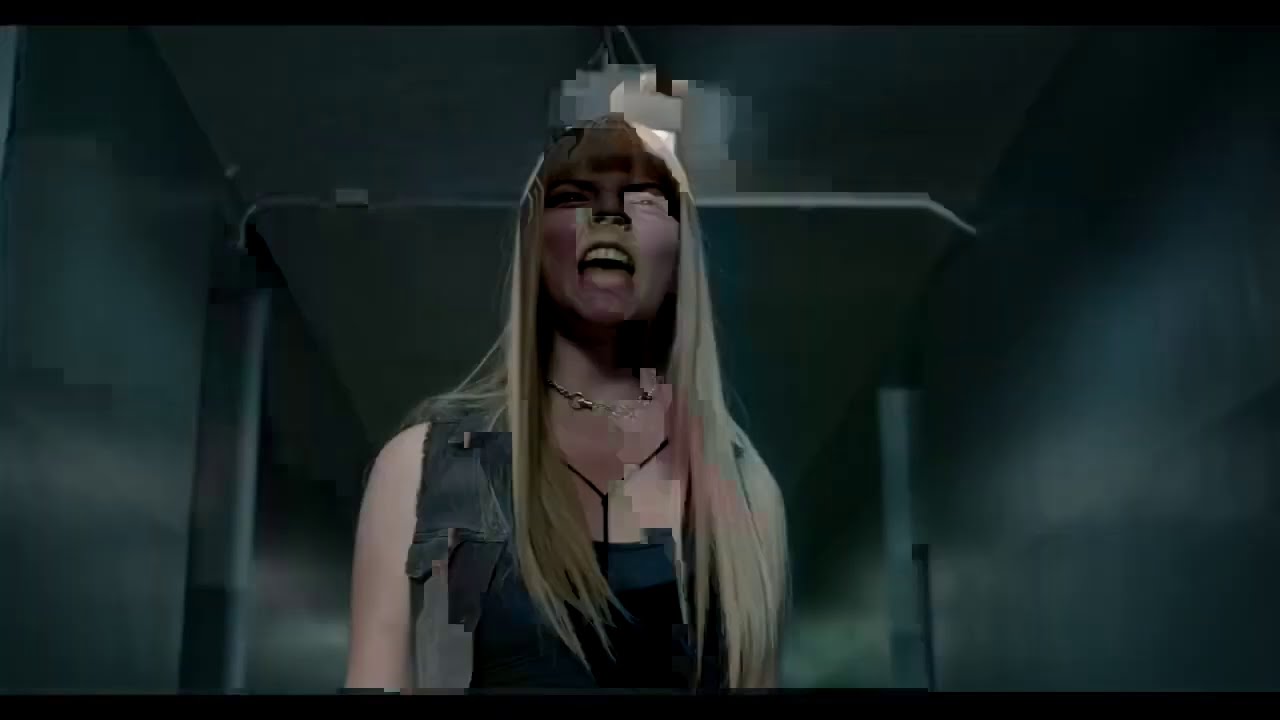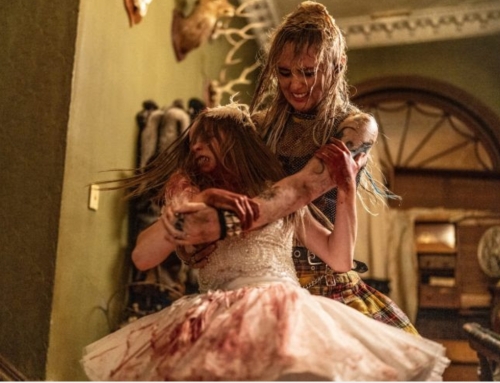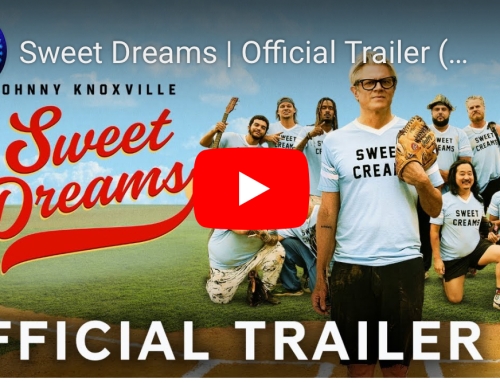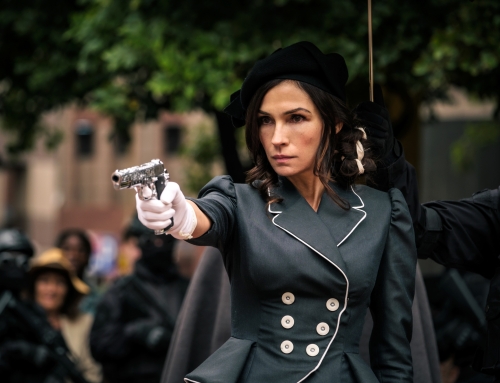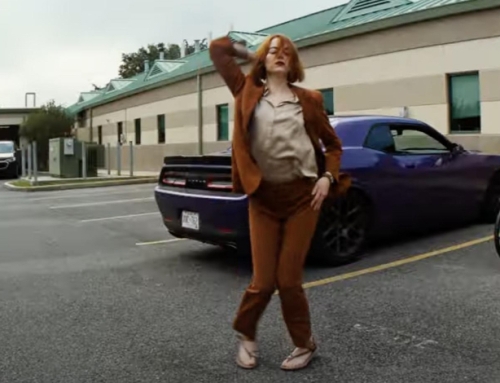Twen�eth Century Studios in associa�on with Marvel Entertainment presents “The New Mutants,” an original horror thriller directed by Josh Boone and wri�en by Boone and Knate Lee. The film stars Emmy® nominee Maisie Williams, Anya Taylor-Joy, Charlie Heaton, Alice Braga, Henry Zaga and Blu Hunt. The producers are Simon Kinberg, p.g.a., Karen Rosenfelt and Lauren Shuler Donner with Stan Lee and Michele Imperato Stabile serving as execu�ve producers.
Rahne Sinclair (Williams), Illyana Raspu�n (Taylor-Joy), Sam Guthrie (Heaton) and Roberto da Costa (Zaga) are four young mutants being held in an isolated hospital for psychiatric monitoring. Dr. Cecilia Reyes (Braga), believing the teenagers are a danger both to themselves and to society as a whole, keeps a close eye on them as she struggles to teach them how to rein in their mutant abili�es. When newcomer Danielle “Dani” Moonstar (Hunt) joins the other pa�ents in the facility, strange occurrences begin to take place. The hospital’s pa�ents are plagued by hallucina�ons and flashbacks, and their new mutant abili�es—and their friendships—will be tested as they ba�le to try to make it out alive.
from page to screen
Growing up, Josh Boone (“The Fault in Our Stars”) and wri�ng partner Knate Lee (“Kidnap”) were comic book fana�cs obsessed with anything Marvel. As kids, they wrote and illustrated their own comics from their parents’ garages which they sold to friends and family.
Being a teenager is a horror story in itself, and the struggles teens face hit especially close to home for Boone. He enjoyed horror stories like
Stephen King’s “The Stand”
and horror films like “The
Shining,” “A Nightmare on Elm Street 3: Dream Warriors” and “Jacob’s Ladder.” But as the son of two evangelical Chris�ans, he was shamed and punished for his a�rac�on to dark and fantas�cal stories.
As a result, some of his favorite comics growing up focused on the struggles of teen angst and
growing pains. “Growing up I related to movies like ‘The Lost Boys,’ where you had a group of kids struggling with adolescence,” says Boone. “They helped me realize I wasn’t alone in the world.”
Boone and Lee were both fans of the “X-Men” comics and were especially drawn to the New Mutants storyline, which debuted in Marvel Graphic Novel #4 in 1982. Wrien by Chris Claremont with illustraons by Bob McLeod, the series introduced a whole new cast of characters who had lile affiliaon with the students from Professor Charles Xavier’s School for Gied Youngsters.
The characters’ powers and backgrounds were more unconvenonal and very psychological compared to the rest of the mainline “X-Men” characters. “It was the first ‘X-Men’ spinoff comic ever, and it was done at a me when the X-Men were thought to be dead, so Xavier had to bring new students together,” explains Boone.
In 1984, graphic arst Bill Sienkiewicz took over the illustraons for the stories, and the narrave moved to a more mature kind of storytelling with a darker tone. “It was partly Claremont’s wring and also Sienkiewicz’s insanely-bordering-on-abstract art that contributed to more of a horror-movie feeling,” says Lee.
Within the New Mutants storyline there was the Demon Bear saga, which revolved around Nave American teenager Dani Moonstar confronng her demons, both figuravely and literally, and the New Mutants were forced to overcome self-doubt and distrust and unite to save the life of their new friend. Boone and Lee were both convinced it was the perfect backdrop for an original story ulizing these exisng characters, and thought it was one that would translate well to the big screen.
Tweneth Century Studios’ history with the X-Men franchise dates back to 2000 and the release of the “X-Men” film. Producer Simon Kinberg produced six of the tles in the franchise, and Boone knew he was the key to geng a New Mutants project off the ground. “We wanted it to be a horror story, one that relayed the true horrors of being a teenager in search of themselves,” says Boone.
Together, they pitched Kinberg a female- driven origin story with the Demon Bear storyline as its framework, which introduces the New Mutants to a brand-new audience,
and before long they were off and wring. “Although we incorporate similar themes from the comics, this is very much its own unique story,” says Boone. “Though there are references to the X-Men, and our characters know who the X-Men are, this a stand-alone world where if you took these characters and tried to place them in another X-Men movie, they would seem like outsiders.”
When the story begins, the five protagonists are fragile and confused kids, and by the end of the film they have all become the New Mutants, and it is a story that is told in an interesng way. “‘The New Mutants’ is very much a coming-of-age story about young adults accepng what’s happened in their pasts so they can move forward into the future,” says producer Karen Rosenfelt (the “Twilight” saga). “We all have a history and past that we have to move beyond, and within this story we wanted to embrace that narrave that provides a strong emoonal spine.”
2
“It is sll a horror film,” adds Boone, “it’s just one that is more in the vein of a horror novel, so it’s more character- driven but with that added horror aspect as well.”
tHe new mutants
When it came to casng the five young mutants around whom the story evolves, the filmmakers wanted to ensure the characters were grounded and credible. Each of the five main characters has suffered some sort of trauma that involved someone dying or damaging someone else’s life, and writer/director Josh Boone wanted to be sure the young characters were different from those personified on screen in previous “X-Men” films. Fortunately, it was a fairly simple process due to Boone’s past experience with young actors. “Josh has a great breadth of the talent out there,” says producer Karen Rosenfelt. “He is very much a character director. He approaches direcng as an actor’s director and really relates well with his casts.”
“These characters are teenagers,” says Boone. “They are dealing with things like being horny at the same me they’re having these terrible things happen to them, so our intent was to have those things happen in that reality.”
With Cheyenne Indian Dani Moonstar, it was important the actress cast was culturally right for the role. Blu Hunt is of Nave American Lakota ancestry, and while she has appeared on the television series “The Originals,” this was her first feature film. Hunt was excited but somewhat nervous, and had to conquer the fear and ancipaon that resonated well with her character.
Boone told the actress to think of the film as an indie movie that just happens to be about superheroes. “All the characters have powers, but every me they use their powers they are learning more about themselves as people,” Hunt says. “They are coming to terms with themselves, and their powers are just like the vacuum through which they do that.”
Dani, who is spirited and good-
natured, is the sole survivor of a
mysterious disaster that decimated
her reservaon. She is plagued by
powers she does not understand,
which threaten her and those around her. As the newest resident, she immediately feels out of place, and her arrival brings strange visions and nightmares to life for the other residents.
These other mutants were already in the hospital, and when Dani arrives she’s the catalyst character and things start to change. “She goes in and disrupts the status quo at this place and basically, through a power she doesn’t know that she has and has no idea how to control, brings out all the things that made these kids end up here in the first place, all of which were related to their mutant powers,” says Boone.
“When we welcome Dani into the movie, into this place, she’s figuring out what’s going on, and the audience will be changing their expectaons within the first 20 or so minutes of the film,” adds Rosenfelt. “They’re going to be like, okay, this is not at all what I thought it was going to be. And Blu has really added a special element to this character.”
3
Maisie Williams of “Game of Thrones” fame was cast as Rahne Sinclair, the young religious Scot who transforms into the furry Wolfsbane. “I didn’t want anyone else to play this character but Maisie. She’s been a part of this process from the beginning, and in some ways I wrote this character for her,” says Boone.
Rahne, who is friendly and easygoing and whose mutant powers give her the ability to shapeshi into a wolf, also goes by the nickname Wolfsbane. Rahne is plagued by feelings of guilt for her abilies, which she believes make her evil in the eyes of God, and she struggles with her romanc feelings for members of the same sex, namely the newest addion to Milbury, Dani.
“Josh told me a lot about his upbringing, and because of that I had a lot of confidence in him because the character I play is very similar to that,” says Williams. “So the whole me I felt as though I’ve had a very different life to bring, but felt very confident playing the character because Josh was direcng and he’d experienced this firsthand, so I felt very safe.”
Anya Taylor-Joy is Illyana Raspun/Magik, the paent who has been at the facility for the longest amount of me and who exists on the boundaries of good and evil, innocence and corrupon. Best known for her work in “The Witch,” “Split” and “Glass,” Taylor-Joy perfectly embodies the mysterious and neuroc new mutant, who is one of the most damaged characters in the story. As someone who suffered horrifically as a child, she finds it hard to trust people and has adopted this ideology that she has to take care of herself and no one else is to be trusted.
“The first thing that the audience learns about her is that she can be slightly abrasive and isn’t exactly warm and cuddly, but as the movie goes on you really start to understand why she is the way that she is, and I think you start to forgive her a lile bit more for it, too,” says Taylor-Joy.
As a result, it’s not all fun and games in the hospital among the paents, especially for the character of Dani, due to Illyana’s reacon to her arrival. “She’s not well pleased,” explains Taylor-Joy. “I think Dani and Illyana are coming from the same situaon but from completely different sides of the spectrum, and so Dani’s very empathec and open and is willing to listen to everybody, whereas Illyana is very insular and she’s built up these giant walls.”
Striking, yet stubborn and somewhat inmidang, Illyana was raised in Siberia, where she endured unspeakable horrors as a child. As Magik—and with her imaginary dragon, Lockheed, by her side—she has the ability to teleport. To escape the traumac suffering of her life at the me, she created a safe place known as Limbo, but she went there so oen it became real. In Limbo, she has sorceress powers and a soulsword with which to fight demons, which grows stronger with every use.
Cast as Sam Guthrie, the Kentucky boy with a dark past whose alter ego is Cannonball, is Charlie Heaton, best known for his role as Jonathan Byers on the hit Nelix series “Stranger Things.” Sam comes from Kentucky, where he was forced to drop out of school to help support his family by working in the coal mines, where his
4
mutant powers were responsible for a number of deaths. Modest, affable and well-liked by all the paents, he has the ability to project himself through the air at incredibly fast speeds, hence his mutant name Cannonball. He is the only paent at Milbury who is convinced he is a threat to himself and to society.
“A big thing for Sam that you’ll see in this movie, in his journey, is that he has this power that, one, he can’t control, but two, he’s afraid of,” says Heaton. “He knows how dangerous it can be, and it causes him a lot of guilt because every me this power goes off it can be lethal, and that’s something he has to live with and overcome.”
Taylor-Joy was thrilled to have an opportunity to work with Heaton. “He’s incredible,” she says. “He’s such a sensive soul, and that really comes across in his performance. Sam and my character have a tenderness that they equate together, which is really beauful to watch onscreen. I love all of my scenes with him.”
Playing Roberto da Costa, the Brazilian mutant also known as Sunspot, is Brazilian actor Henry Zaga (“13 Reasons Why”). Roberto comes from a really wealthy family, but from a place of abandonment as well. “I don’t think he had that much love from his family, and a lot of fake love from his friends because of his status,” says Zaga. “He was a man on his own growing up, and he had different struggles than most, dealing with not being so loved or not having that much aenon from the people you love the most, as well as being a mutant.”
Berto, aka Sunspot, has solar powers, for which his parents sent him to Milbury in hopes of curing. While handsome, charming and flirtaous, he is hesitant to discuss his mutant abilies and is even more afraid of using them. Similar to the other four mutants in the hospital with their own dark pasts, Roberto relives his own personal trauma, and lile by lile you see him peeling back the onion and you start to see what’s really inside. By the end of the movie, all the mutants come together, finally breaking down their walls and realizing they only have each other.
“This has to be a really compelling story, character-wise, and each one is really layered…they just happen to have mutant powers. I wouldn’t even call them superheroes just yet,” says Zaga. “They just have mutant powers that they are trying to deal with, and it adds so much addional drama to what is already a stressful adolescence.”
According to Boone, “Berto is like a womanizing Lothario, who says like the most reprehensible things, but he’s charming and handsome, so he gets away with it. He has a really dark back story, so this whole sort of façade he puts forth is to steer people clear of the horrible pain he experienced.”
Cast as Dr. Cecilia Reyes, the overseer and protector of the new mutants at the facility, is Brazilian actress Alice Braga (“Predators”). For the actress, the film was a great experience, as she was, for once, the oldest one on set. “It was so inspiring to see their energy,” she says, “and they were all from different places, so it was a nice combinaon of different type of people acng together.”


